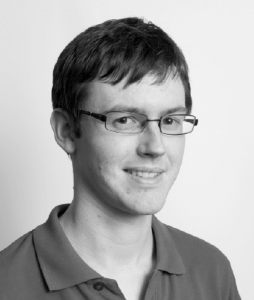FRIDAY, 27 APRIL 2012
It’s a popular notion that the left half of the brain is responsible for logic and the right half for creativity. While there is some truth to this, the extent of this separation is often greatly exaggerated. The idea persists, however much it annoys neuroscientists, because it provides a reminder of the need for balance in the way we think. Just because science prides itself on its logical foundations does not mean that some ‘right-brained’ thinking isn’t also needed.Many of the people involved at BlueSci are balanced individuals with healthy regard for both logic and creativity, and so find writing about science to be a natural path. Others, like me, have been ‘left-brained’ all their lives until finding their ‘right-brain’ in need of creative output. Communicating about science, and hopefully making it interesting, provides the opportunity to engage with both ‘halves’ of the brain.
So why doesn’t science already provide this stimulation? One of the most important aspects of science is the communication of results, yet this is often paid little attention. Science is a global community and it is heavily dependent on people travelling around the world to conferences in order to communicate their results and listen to others’. It is far from the most environment-friendly or budget-friendly activity, so why are these conferences necessary? Are we not communicating effectively enough through journals?
Publishing results in an academic journal, where much of the language and structure is heavily prescribed, leaves little room for creativity. However, in a presentation or a poster an author is free to explain their work in any manner they wish. Often the best speakers are those who can weave a story from their work. No matter your background or which side of your brain you use, everyone loves a story. A narrative keeps the audience following the train of thought and paying attention. This isn’t always easy and engaging your creative side can make all the difference.
The ‘right-brain’ is even more crucial when trying to communicate with a wider audience. The ability to talk about a specialised area of research without using equally specialised terminology can require a lot of practice, which is greatly lacking in most scientists’ lives. Yet communicating with the public is vital as science continues to impact upon society. In this issue of BlueSci, we cover debates over cognition-enhancing drugs, money spent on genome research, and preparation for potential disasters. All of these matters require scientists to have their say but they’ll need both halves of their brains to make it heard. Ian Le Guillou
Issue 24: Easter 2012
Editor: Ian Le Guillou
Managing Editor: Tom Bishop
Business Manager: Michael Derringer
Second Editors: Lizzie Bateman, Wing Ying Chow, Camilla d’Angelo, Matt Dunstan, Leila Haghighat, Nicola Hodson, Anand Jagatia, Sarah Jurmeister, Jonathan Lawson, Nicola Love, Louisa Lyon, Wendy Mak, Laura Mears, Vicki Moignard, Alexey Morgunov, Lindsey Nield, Betheney Pennycook, Hugo Schmidt, Nicola Stead, Hinal Tanna, Divya Venkatesh, Beth Venus, Madushi Wanaguru
Sub-Editors: Emma Bornebroek, Helen Gaffney, Leila Haghighat, Nicola Hodson, Vicki Moignard, Hugo Schmidt
News Editor: Louisa Lyon
News Team: Joanna-Marie Howes, Catherine Moir, Ayesha Sengupta
Reviews: Matthew Dunstan, Leila Haghighat, Jordan Ramsey
Focus Team: Maja Choma, Ruth Gilligan, Leila Haghighat, Anand Jagatia
Weird and Wonderful: Emma Bornebroek, Yvonne Collins, Martha Stokes
Pictures Team: Emma Bornebroek, Yvonne Collins, Nele Dieckmann, Helen Gaffney, Jonathan Lawson
Production Team: Emma Bornebroek, Jenny Crowhurst, Nele Dieckmann, Helen Gaffney, Anna Goulding, Leila Haghighat, Jonathan Lawson, Lousia Lyon, Wendy Mak, Jordan Ramsey
Illustrators: Alex Hahn, Dominic McKenzie, Claudia Stocker
Cover Image: Joseph Paddison & Andrew Goodwin
References
Features
Staying Alive – HP Liss, A history of resuscitation, Annals of Emergency Medicine, 15:65–72
Symmetry in Science – Dwight E Neuenschwander, Emmy Noether’s Wonderful Theorem
Big Ideas, Small Beginnings – The view from the top, IEEE Spectrum (2004)
Type ‘L’ For Love – P Todd, F Billari and J Simao, Aggregate Age-at-Marriage Patterns from
Individual Mate-Search Heuristics, Demography, 42.3:559–574
Turbocharged Thinking – BJ Sahakian and S Morein-Zamir, Neuroethical issues in cognitive enhancement Journal of Psychopharmacology, 25(2):197–204
Regulars
From Herbs to Hormones – CA Quarini, History of Contraception, Women’s Health Medicine, 2(5):28-30
Dreaming up Science – www.plato.stanford.edu/entries/thought-experiment/
The Grand Question – Simon Winchester, Bomb, Book and Compass: Joseph Needham and the Great Secrets of China
The Genome Generation – Francis Collins, Has the Revolution Arrived?, Nature, 464:674-675
Preparing for the Unknown – www.bis.gov.uk/assets/goscience/docs/b/12-519-blackett-review-high-impact-low-probability-risks

